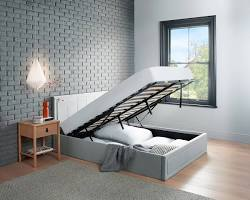Sharing a bedroom can be a magical experience for siblings, fostering closeness and creating a world of their own.
But it can also be a recipe for squabbles over space and belongings. The key? A well-designed shared room that caters to both function and fun.
Here are 25 ideas to inspire you to create a shared haven your kids will love:
Space-Saving Solutions:
Bunk Up:

Bunk beds are a classic for a reason. They maximize vertical space, freeing up floor area for play and storage. Consider L-shaped bunks for additional nooks, or a loft bed with a play area underneath.
Head-to-Toe or Toe-to-Toe:

For a smaller room, position twin beds in an “L” shape in a corner. This creates individual zones and leaves more space for other furniture.
Murphy Magic:

Murphy beds fold into the wall when not in use, creating a whole new room during the day. Add a play area, desks, or a reading nook underneath.
Double Duty Dressers:


Choose dressers with built-in beds or desks. This combines storage and sleeping/working areas, maximizing both functionality and aesthetics.
Climbing the Ladder:

Loft beds with built-in stairs or ladders are a fun and space-saving option. The space underneath can be used for storage, a reading nook, or a secret hideaway.
Storage Solutions:
Built-in Bunks with Storage:


Opt for bunk beds with drawers or cubbies integrated into the frame. This eliminates the need for extra dressers and keeps clutter at bay.
Under-the-Bed Storage:


Utilize the space beneath beds with rolling drawers or lift-up ottomans. Kids can store toys, clothes, or seasonal items.
Up, Up, and Away!


Utilize vertical space with wall-mounted shelves, cubbies, and cabinets. This keeps toys and books organized and easily accessible.
Clever Container Ottomans:

Ottomans with storage compartments are a win-win. They provide extra seating and a place to stash blankets, pillows, or stuffed animals.
Label Everything:

Label shelves, drawers, and containers to avoid sibling arguments about who owns what. Clear bins let kids see their belongings at a glance.
Creating Individuality:
Mirrored Images (Almost!):

For kids who share similar tastes, create a cohesive look with matching beds and similar color palettes. Personalize each side with different artwork, bedding, or throw pillows.
Color My World:


Divide the room in half using paint or wallpaper. Each child gets to choose their own color scheme or theme, fostering a sense of ownership.
Curtain Call for Privacy:


Install curtains on bunk beds or use room dividers to create individual sleeping areas when needed. This provides a sense of privacy for reading, relaxing, or simply getting some personal space.
Personalize with Pegboards:

Pegboards are a fantastic way for each child to display their artwork, photos, or collections. It’s a great way to showcase their individuality within the shared space.
Nightstand Nooks:

Instead of a single shared nightstand, consider two smaller ones, each reflecting the child’s personality. This gives them a dedicated space for their lamp, books, and personal treasures.
Fun and Functionality:
Themed Territory:

Cater to the kids’ interests with a shared theme. Transform the room into a pirate ship, a jungle adventure, or a space station. Use themed furniture, bedding, and accessories to bring the theme to life.
Chalkboard Creativity:

Dedicate a wall or door to a giant chalkboard. This encourages drawing, writing messages, or simply playing games.
Fort-tastic Fun:

Create a dedicated fort-building area with blankets, pillows, and clips. This provides endless imaginative play opportunities.
Light Up the Night:

String fairy lights around the room or add starry night projector lights to create a magical and calming atmosphere.
Cozy Reading Nook:

Carve out a cozy reading nook with comfy cushions, a small bookshelf, and a soft throw blanket. This encourages individual reading time and fosters a love of books.
Shared Art Station:

Dedicate a corner or wall for a shared art station. Include a table or counter with a washable surface, art supplies, and a roll of paper for endless artistic expression.
Magnetic Marvels:

Install a magnetic board on the wall for displaying artwork, schedules, or photos. Kids can easily change things up and personalize their space.
Encouraging Togetherness:
Game On!

Include a dedicated game area with a beanbag chair, a small table, and storage for board games, puzzles, or card games. This encourages sibling bonding and quality time together.
Movie Magic:

Invest in a projector and screen for movie nights. This creates a fun shared activity and a cozy space for the whole family to cuddle up.
Twin Towers, But Make it Fun!:

For younger siblings, consider two identical play kitchens or dollhouses. This allows for cooperative play and encourages imaginative storytelling together.
Bonus Tips:
- Involve the Kids: When designing the room, get your children involved in the planning process. Let them choose colors, themes, and furniture (within reason) to create a space they feel ownership over.
- Durable and Easy to Clean: Opt for furniture and materials that are easy to clean and withstand wear and tear. Choose washable paint, stain-resistant fabrics, and sturdy furniture.
- Lighting for Different Moods: Utilize a combination of lighting options, including overhead lights for general use, dimmer switches for a calming atmosphere, and bedside lamps for individual reading time.
- Safety First: Ensure all furniture is anchored properly, bunk beds have safety rails, and electrical outlets are covered.
By incorporating these ideas, you can create a shared bedroom that caters to both functionality and fun. It can be a space that fosters sibling closeness, encourages individual expression, and provides a haven for rest and play. Remember, the best shared bedroom is one that reflects the unique personalities of the children who call it their own.

